With current tariffs, where are portable air conditioners being exported to?
Tariffs making your export plans difficult? Rising costs and shifting markets create real headaches. Let's look at where portable ACs might go and how innovation can help navigate trade barriers.
With current tariffs impacting major routes, portable air conditioners are increasingly exported to regions with fewer trade barriers or strong demand due to climate. Businesses often explore new markets in Southeast Asia, Latin America, or parts of Africa to avoid tariffs faced elsewhere, like between the US and China.

Navigating international trade feels like a moving target these days, especially with products like portable air conditioners. Tariffs add complexity, squeezing margins and forcing us to think differently. My own journey in manufacturing and trade taught me that adapting is key. We need to understand the impacts and find smart solutions, like exploring new markets or innovating our products to stay competitive. Let's dive into the common questions surrounding ACs, tariffs, and the trade environment.
Will air conditioning units be affected by tariffs?
Worried tariffs will hit your AC profits? Rising import/export costs and unpredictable global trade can cause a lot of stress for businesses like ours involved in manufacturing and distribution.
Yes, air conditioning units, including portable models, are definitely affected by tariffs. These taxes increase the cost of importing and exporting, which can lead to higher prices for consumers and reduced profits for businesses in the supply chain.
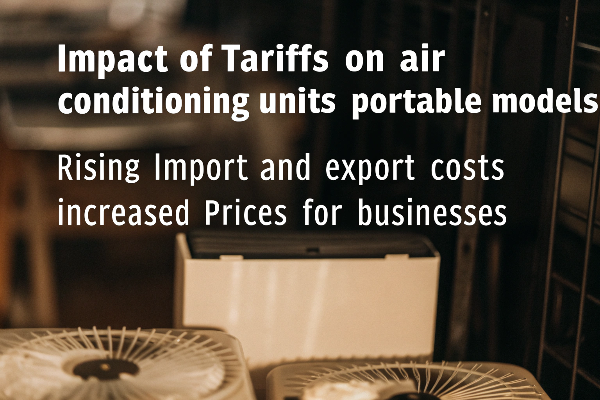
Tariffs act as a direct tax on air conditioners crossing borders. When a country imposes a tariff, the importer typically pays this extra cost. From my experience helping clients manage mold production costs for electronics, I know these added expenses rarely just vanish. They usually get passed along. This directly impacts the final price and competitiveness. We need strategies to manage this. One approach is finding markets where these tariffs don't apply, like exploring countries needing cooling solutions but outside major trade disputes. Another is technological innovation – making our products more energy-efficient or adding unique features can help justify a price point even with tariffs, maintaining market competitiveness. For example, a client facing tariffs on components invested in R&D to improve energy efficiency, creating a new selling point.
Cost Increases Explained
- Landed Cost: The tariff adds directly to the cost of the AC unit, plus shipping and insurance. Higher initial investment is required.
- Component Costs: Tariffs on parts like compressors or control boards raise manufacturing expenses.
- Supply Chain Response: Businesses might seek suppliers in non-tariff countries or even shift production, causing delays.
- Consumer Prices: Ultimately, tariffs often mean higher shelf prices, potentially reducing demand.
What is the tariff heading for air conditioner?
Feeling lost trying to find the correct tariff code for air conditioners? Using the wrong Harmonized System (HS) code can lead to expensive delays, customs issues, and potential fines. Let's get this right.
Air conditioners generally fall under Harmonized System (HS) code heading 8415. The exact code varies based on the specific type (window, split, portable) and cooling capacity. Always confirm with official customs tariff schedules.
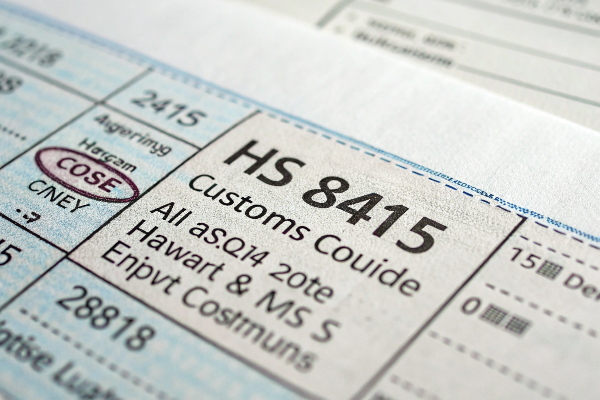
Getting the HS code correct is non-negotiable in international trade. I remember early in my trading business, a simple classification mistake held up a shipment of CNC parts for weeks. It was a costly lesson in the importance of detail. The Harmonized System is the global standard customs authorities use to classify goods. This code determines import duties (tariffs), rules of origin, and taxes. Heading 8415 covers "Air conditioning machines, comprising a motor-driven fan and elements for changing the temperature and humidity..."
Finding the Specific Code
Within heading 8415, you need to drill down:
- 8415.10: Window or wall types, self-contained or "split-system".
- 8415.20: Used in motor vehicles.
- 8415.81 - 8415.83: Other types, including many portable units, often classified by features like having a refrigerating unit or heat/cool reversal.
- 8415.90: Parts of air conditioners.
The precise code depends heavily on the technical specifications of your portable AC. Is it cooling only? Does it have a heating function? What's its capacity (BTU)? You must consult your country's official tariff schedule or the World Customs Organization (WCO) resources. Accuracy here prevents customs headaches and ensures you pay the correct duty, avoiding penalties for underpayment or the hassle of reclaiming overpayments.
Can you trade in your old air conditioner?
Is that old, inefficient air conditioner just collecting dust? Getting rid of it properly can be a pain, and simply throwing it away isn't responsible. Maybe trading it in is an option?
Yes, sometimes you can trade in an old air conditioner. Some retailers or manufacturers offer trade-in deals, often during promotions for new models. Local utility companies might also offer rebates for upgrading to energy-efficient units.

Getting some value back from an old appliance while ensuring it’s handled correctly sounds like a win-win. These programs aren't universal, but they are worth investigating, especially when buying new. I recall helping a client source parts for a new energy-efficient model; their customer was motivated by a utility rebate that made the upgrade more affordable. These incentives definitely influence purchasing decisions.
Where to Look for Trade-Ins/Rebates:
- Retail Stores: Major appliance retailers sometimes have seasonal trade-in events. They offer a discount on a new purchase when you bring back your old unit. The value might be small, but it simplifies disposal.
- Manufacturer Promotions: Occasionally, AC brands run their own trade-in or upgrade offers directly. Check their websites.
- Utility Companies: This is often the best bet. Many energy providers offer significant cash rebates for replacing old, inefficient ACs with new high-SEER (Seasonal Energy Efficiency Ratio) models. This isn't a direct trade-in, but it lowers the net cost of the new unit. They usually require proof of purchase and proper disposal of the old one.
- Local Recycling Programs: Even without a trade-in value, check your city or county's hazardous waste or appliance recycling programs. They ensure safe refrigerant recovery and materials recycling.
Proper disposal is crucial because old refrigerants harm the environment. Responsible trade-in or recycling programs handle this correctly.
What trade would install an air conditioning unit?
Need a new air conditioner installed but unsure who to call? Hiring the wrong person can lead to poor performance, wasted energy, voided warranties, or even safety hazards. Let's identify the right professional.
Licensed HVAC (Heating, Ventilation, and Air Conditioning) technicians are the qualified trade professionals for installing most air conditioning systems. For installations requiring complex electrical modifications, a licensed electrician's involvement is often necessary too.

Choosing the right installer is vital, especially for systems more complex than a basic portable unit you just plug in. When my company provides molds for AC components, we know the final product's performance depends heavily on correct installation. Recommending professional installation is part of ensuring customer satisfaction. An HVAC technician is trained for this specific work.
HVAC Technician Expertise Includes:
- Load Calculation: Determining the right size AC for the space to ensure efficiency and comfort.
- Refrigerant Management: Certified handling of refrigerants according to environmental regulations (like EPA Section 608 in the US).
- Ductwork Connections: For central air systems.
- Line Set Installation: Correctly running and connecting refrigerant lines for split systems.
- Electrical Wiring: Safely connecting the unit to the power supply (sometimes in coordination with an electrician).
- Thermostat Setup: Integrating controls for proper operation.
- System Testing: Commissioning the unit to verify performance and airflow.
When an Electrician is Needed:
Many AC systems, especially central or larger split systems, require a dedicated electrical circuit or upgrades to the home's main panel. A licensed electrician performs this work safely and ensures compliance with electrical codes. Often, the HVAC company coordinates this or has electricians on staff. Using qualified tradespeople ensures safety, maximizes efficiency, maintains the manufacturer's warranty, and complies with local building codes.
What do HVAC companies do with old units?
Wondering what happens to your old air conditioner after the HVAC crew hauls it away? It doesn't just go to the dump – or at least, it shouldn't. Responsible handling is required by law.
Reputable HVAC companies follow strict environmental protocols for old AC units. They must safely recover the refrigerant gas using specialized equipment. After recovery, the unit is usually dismantled, and materials like copper, aluminum, steel, and plastic are separated for recycling.
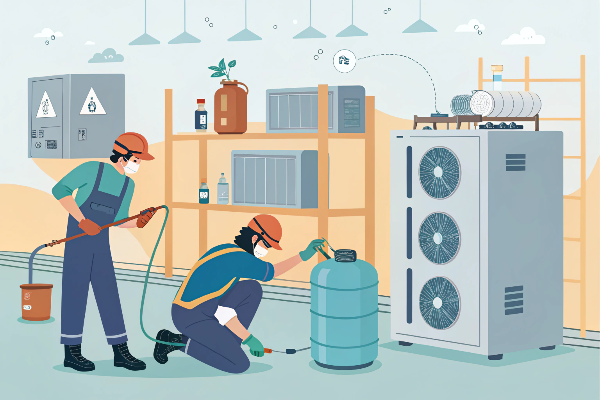
Proper disposal isn't just good practice; it's legally mandated in many places due to the harmful refrigerants inside old units. As someone involved in manufacturing components, understanding the full lifecycle, including disposal, is important. When an HVAC company removes an old unit, the first critical step is refrigerant recovery. Technicians need certification (like EPA 608 in the US) and specialized vacuum pumps and tanks to capture the refrigerant safely. Venting it is illegal because older refrigerants damage the ozone layer, and even newer ones are potent greenhouse gases.
After Refrigerant Recovery:
- Dismantling: The unit is taken apart.
- Materials Separation: Valuable metals are separated:
- Copper (from coils, wiring)
- Aluminum (from fins, coils)
- Steel (from the casing, frame)
- Other Components: Plastics, fans motors, and capacitors are also segregated.
- Recycling: These separated materials are sent to specialized recycling facilities. This reduces landfill waste and the need for mining new raw materials.
Choosing an HVAC provider committed to responsible disposal ensures compliance with environmental laws (like the Clean Air Act in the US) and contributes to sustainability. Don't hesitate to ask your installer about their specific disposal procedures.
Is it legal to install your own air conditioner?
Thinking about saving money by installing that new air conditioner yourself? Before you start, consider the type of AC and local regulations. A DIY installation might be illegal, unsafe, or void your warranty.
Generally, installing simple portable or window air conditioners yourself is legal and common. However, installing central air conditioning or split systems (ductless mini-splits) often requires licensed professionals due to complex electrical work and legally mandated refrigerant handling procedures.
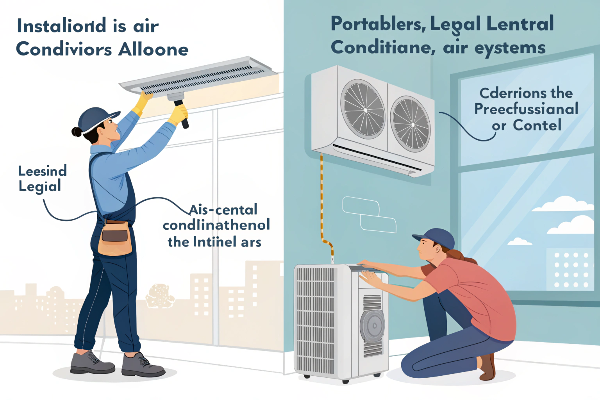
I built my business MoldAll from the ground up, so I appreciate the DIY approach. However, some jobs require specialized skills and licenses for safety and legal compliance. Installing complex AC systems often falls into this category. Portable ACs are designed for users – plug them in, vent the hose, and you're good. Window units are similar, though lifting can be tricky. But split systems and central air are different beasts.
Key Considerations for DIY Legality:
- Electrical Work: Many systems need dedicated circuits. In most jurisdictions, only licensed electricians can legally perform this type of wiring to meet safety codes and prevent fire risks.
- Refrigerant Handling: Connecting the refrigerant lines between the indoor and outdoor units of a split system requires specialized tools (vacuum pump, gauges, flaring tools) and certification (e.g., EPA Section 608). Releasing refrigerant into the atmosphere is illegal and environmentally damaging. Improper connections lead to leaks and system failure.
- Building Permits: Installation of permanent systems like central or split AC often requires a permit from your local building department, which usually necessitates installation by licensed contractors.
- Warranty: Most manufacturers state that the warranty on split and central systems is void if not installed by a qualified, licensed HVAC technician. They know improper installation (like incorrect line set length, poor vacuum, or wrong charge) is a major cause of problems.
While you can legally plug in a portable AC, attempting a split or central system installation yourself carries significant legal, safety, and financial risks.
Are air conditioners in short supply?
Trying to buy an AC unit but facing empty shelves or long delivery times? It’s a common frustration, especially when you need cooling now. Let's look at the supply situation for air conditioners.
Yes, air conditioner availability has faced challenges recently, leading to periods of short supply. This stems from a combination of factors like manufacturing disruptions, global shipping delays, high demand during heatwaves, and shortages of critical components like semiconductor chips.
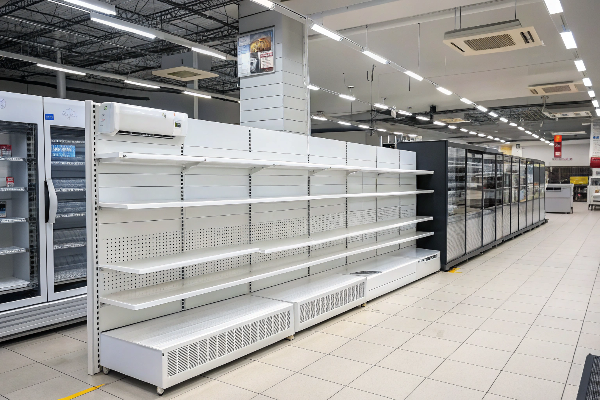
As someone deeply involved in manufacturing supply chains through my mold business, I've seen how fragile things can be. Air conditioners are complex products with components sourced globally, making them vulnerable to disruptions. Several factors have squeezed AC supply. The pandemic caused factory shutdowns and labor shortages. Unprecedented global logistics jams – container shortages, port congestion – delayed shipments significantly. I had clients waiting months instead of weeks for critical mold components, and similar issues hit AC manufacturers.
Specific Supply Chain Issues:
- Semiconductor Chip Shortage: Modern ACs use chips for smart features and efficient operation. The global chip shortage impacted production across many industries.
- Raw Material Costs/Availability: Fluctuations in copper, aluminum, and plastic prices affected costs and sometimes availability.
- Surging Demand: Climate change is leading to more frequent and intense heatwaves, causing sudden demand spikes that outstrip supply.
- Trade Policies/Tariffs: Sometimes trade disputes can disrupt established supply chains or add costs, influencing production decisions.
To cope, businesses like mine focus on resilience. For AC exporters or retailers, this might mean diversifying suppliers, holding more inventory (which ties up capital), or focusing on technological innovation to create products less dependent on specific constrained components or offer higher value. For consumers, it means planning ahead and being flexible.
What is a disadvantage of a tariff?
Tariffs are often discussed as tools to protect local jobs or industries. But they have significant downsides. What's a key negative effect we need to consider?
A major disadvantage of tariffs is that they typically increase costs for both businesses and consumers in the country imposing them. This leads to higher prices for goods, reduces purchasing power, and can ultimately hinder overall economic growth.

While the intention might be protectionist, the reality is that tariffs often create broad economic headwinds. In my experience trading molds and components internationally, tariffs introduce friction and cost that ripples through the supply chain. The most immediate impact is higher prices. Tariffs are taxes on imports. The importer pays the tax, and this cost is usually passed on. If tariffs hit imported AC units, store prices go up. If they hit imported compressors or motors, domestic AC manufacturers face higher production costs, also leading to higher prices.
Other Key Disadvantages:
- Retaliation: Tariffs often provoke retaliatory tariffs from other countries, hurting export industries in the original country. This turns into trade disputes that harm multiple sectors.
- Reduced Choice: Tariffs limit competition from imports, which can mean fewer product options for consumers.
- Economic Inefficiency: They can protect less efficient domestic industries, meaning resources aren't used optimally. Lack of import competition can also stifle innovation.
- Supply Chain Disruption: Tariffs force businesses to rethink sourcing and logistics, adding complexity and uncertainty. I saw clients scramble to find alternative suppliers or redesign products when tariffs hit key components – a costly and time-consuming process.
Tariffs might offer targeted benefits, but they often come at a broader economic cost.
Have AC units increased in price?
Feeling like air conditioners cost more now than they did a few years ago? You're probably right. Let's look at the reasons behind the rising prices of AC units.
Yes, the price of air conditioning units has generally increased in recent years. Key drivers include higher costs for raw materials (metals, plastics), significantly increased global shipping expenses, shortages of essential components like computer chips, tariffs, and strong consumer demand.
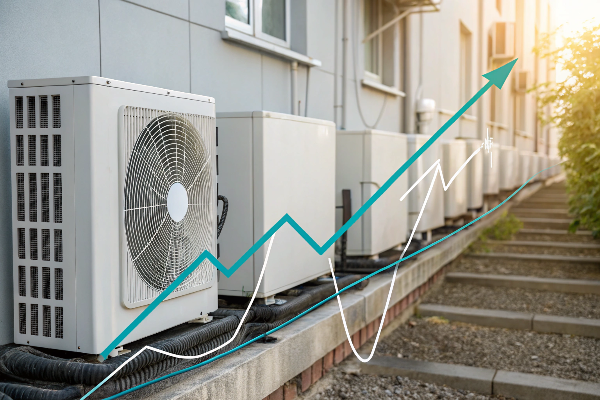
Cost tracking is fundamental in my business. The same forces driving up costs for manufacturing molds – raw materials, energy, logistics – inevitably impact complex appliances like air conditioners. Several factors converged to push prices up. Raw material costs for copper, aluminum, and plastics saw sharp increases. Global shipping rates skyrocketed due to pandemic-related disruptions and high demand, making it much more expensive to transport bulky AC units.
Contributing Factors to Price Hikes:
- Raw Materials: Copper, aluminum, steel, and resin prices rose.
- Logistics: Container shipping costs exploded.
- Component Shortages: The semiconductor chip crisis impacted ACs with electronic controls.
- Labor Costs: Manufacturing and installation wages increased.
- Tariffs: Taxes on imported units or parts added direct costs.
- Strong Demand: More frequent heatwaves boosted demand, allowing price increases.
- Innovation Costs: Developing more energy-efficient or smarter units involves R&D costs that get factored into the price. Maintaining market competitiveness often requires continuous technological innovation, which also adds to the base cost but can offer long-term value through energy savings.
For consumers, this means higher upfront costs. It underscores the importance of considering long-term operating costs (energy efficiency) when purchasing, as savings there can help offset the higher initial price over the unit's lifespan.
What is the main export of the United States?
When we think about global trade, what are the major products the United States sells to the rest of the world? Understanding this helps frame discussions about trade balances and tariffs.
The main exports of the United States are typically high-value capital goods (like aircraft, machinery, medical devices), industrial supplies (chemicals, fuels, plastics), various consumer goods (cars, pharmaceuticals), and key agricultural products (soybeans, corn, meat).

Knowing the big export categories provides context for trade policies. While my world revolves around manufacturing inputs like molds, these large-scale exports drive a significant portion of the US economy's international engagement. The specific rankings might shift slightly, but the core categories remain fairly consistent.
Top US Export Categories:
- Capital Goods: Includes industrial machinery, semiconductors, telecommunications equipment, medical devices, and aircraft. This is often the largest category by value.
- Industrial Supplies: Includes petroleum products, chemicals, plastics, and other materials used in manufacturing abroad.
- Consumer Goods: Notable items include pharmaceuticals and automobiles.
- Agricultural Products: Soybeans, corn, wheat, cotton, meats, and nuts are major farm exports.
- Automotive Vehicles, Parts, and Engines: A significant sector involving trade, especially with Canada and Mexico.
These exports go to major trading partners like Canada, Mexico, China, Japan, and the European Union. They support millions of American jobs. When tariffs are imposed, either by the US or retaliatory tariffs by other countries, these major export sectors often feel the most significant impact, affecting businesses and workers across the nation.
What is the main problem with tariffs?
We know tariffs raise costs and can lead to trade disputes. But what's the fundamental underlying issue with them from an economic perspective? Let's identify the core problem.
The main problem with tariffs is that they distort efficient international trade patterns, increase costs for producers and consumers, provoke retaliation, and generally reduce overall economic welfare more than they benefit the specific industries they aim to protect.
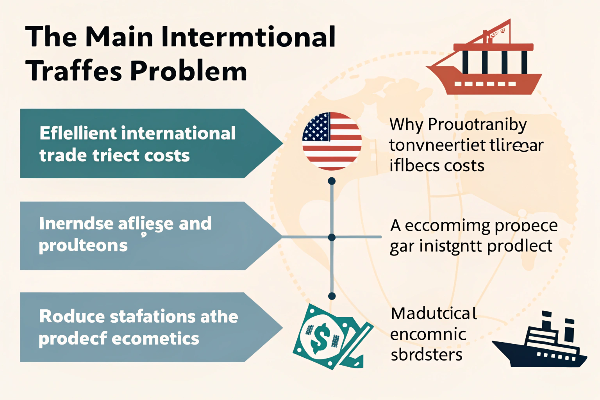
In my business, predictability and efficiency in the supply chain are crucial. Tariffs introduce the opposite: uncertainty, inefficiency, and added costs. That's the fundamental issue. Economically, tariffs interfere with the principle of comparative advantage. This means countries naturally specialize in producing what they make most efficiently and trade for the rest. Tariffs disrupt this natural efficiency. They make imports artificially expensive, encouraging domestic production even if it's less efficient globally. This misallocates resources – labor, capital, materials aren't used in the most productive way possible.
Core Issues Summarized:
- Inefficiency: Resources shift from efficient export sectors or other productive uses to less efficient protected domestic sectors.
- Higher Costs: Consumers pay more, reducing their purchasing power. Businesses using imported inputs face higher production costs.
- Retaliation Risk: Tariffs often lead to a tit-for-tat escalation, harming multiple industries and international relations.
- Reduced Competition: Domestic firms face less pressure from imports, which can lead to complacency, less innovation, and lower quality over the long term.
- Complexity & Uncertainty: Tariffs make international business planning much harder. I’ve seen clients hesitate on investments due to unpredictable trade policies.
While tariffs might seem like a simple tool, their economic consequences are complex and often negative overall.
What are tariffs in simple words?
You hear the term "tariff" in discussions about trade, but what exactly does it mean in basic terms? It's a key concept affecting the price of imported goods. Let's simplify it.
Simply put, a tariff is a tax imposed by a government on goods that are imported into the country. This tax makes the imported item more expensive for businesses and consumers buying it.
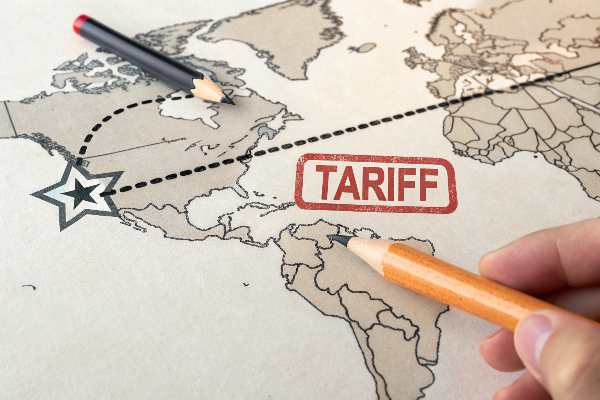
Think of it like an entry fee for foreign products crossing the border. When a company brings goods from another country, the government charges this extra amount. It's a specific tax only applied to imports.
Why Do Governments Use Them?
There are a few common reasons:
- Protect Local Businesses: Making imported goods more expensive encourages people to buy locally made alternatives. This helps domestic industries compete.
- Raise Government Money: Like other taxes, tariffs collect revenue for the government.
- Political Leverage: Tariffs can be used as a tool in negotiations or disputes with other countries.
Who Really Pays?
The importing company officially pays the tariff tax to the government. However, this added cost usually gets passed along. The manufacturer might absorb some, the wholesaler adds it to their price, the retailer adds it too, and ultimately, the consumer often pays a higher price for the product. Sometimes it forces companies like mine, or my clients, to find new suppliers or innovate to absorb the cost, but often, the price tag you see in the store reflects that tariff cost.
Conclusion
Tariffs complicate portable AC exports, driving businesses towards new markets and innovation. Understanding HS codes, installation, disposal, and the real costs of tariffs is vital for navigating today's trade landscape effectively.



